How Do I Know if My Guitar Nut or Saddle Is Bone?
Wondering whether your guitar nut or saddle is bone? Use the below tips to determine whether your guitar has bone or plastic. You will likely need to remove the part first, though. For a nut this may be quite difficult if it’s glued in. However, for most acoustic guitar saddles, you can remove them fairly easily by following our tips on removing a saddle without complete restringing.
Look for Manufacturing Marks
Plastic guitar parts will often have manufacturing marks from the production process. These marks might be holes or indentation marks.
Bone nuts and saddles, on the other hand, are made through subtractive manufacturing in which material is removed. As such, you will not see production holes or indentations.


Look for Plastic Overflow
Plastic nuts and saddles sometimes contain a small amount of plastic overflow. This overflow will appear on the bottom, where a small amount of plastic leaked during the manufacturing process.

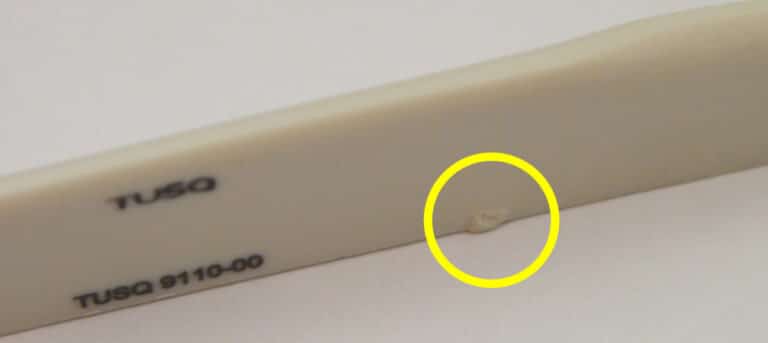
Hold It Up to the Light
Try holding your nut or saddle up to a light. Quality plastic parts are typically much less translucent than bone parts are. Additionally, plastic will have a smooth, consistent pattern. Furthermore, in a plastic nut or saddle you may find translucent sections for the manufacturing holes.
Conversely, bone is a much more translucent material. Additionally, bone is an inconsistent material and you will likely see inconsistent grain lines, and possibly even mineral lines in bone.
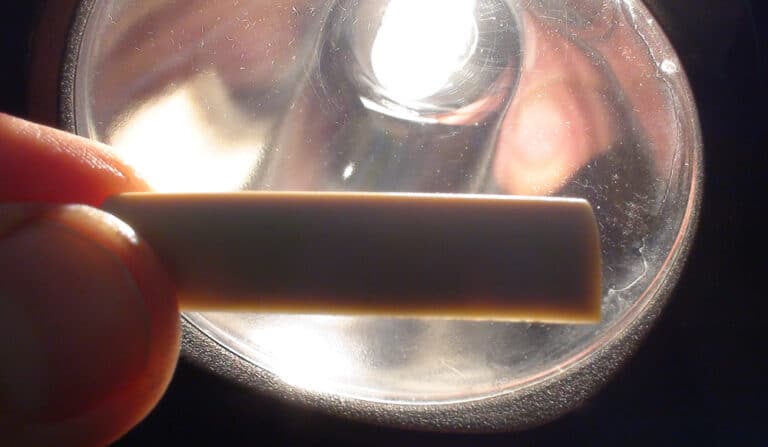
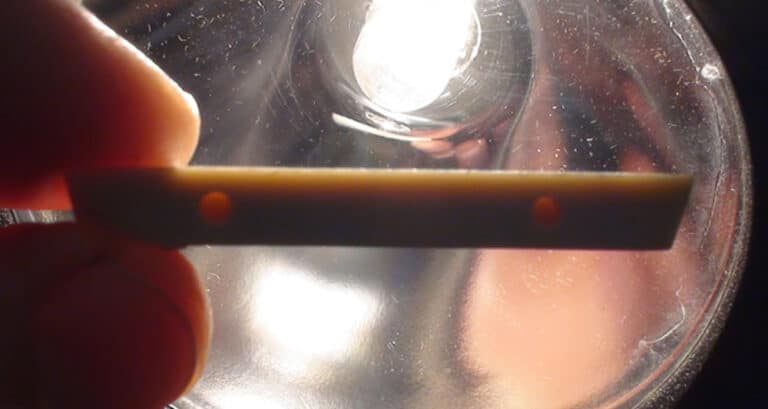
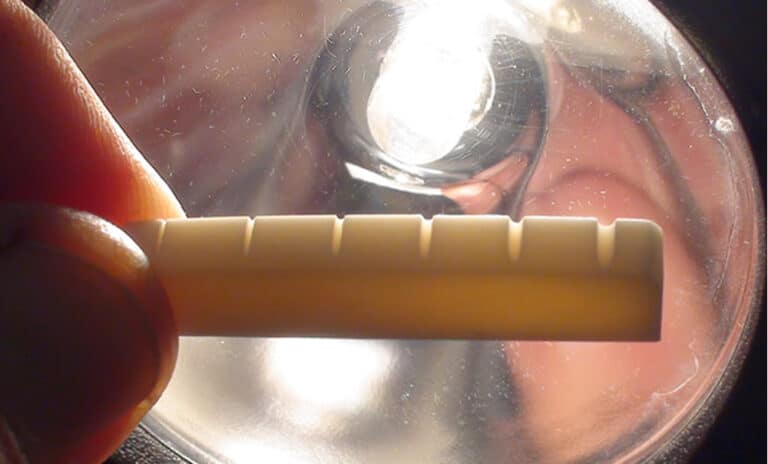
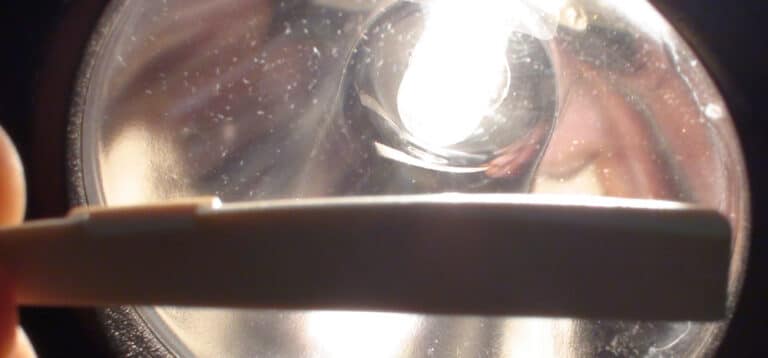
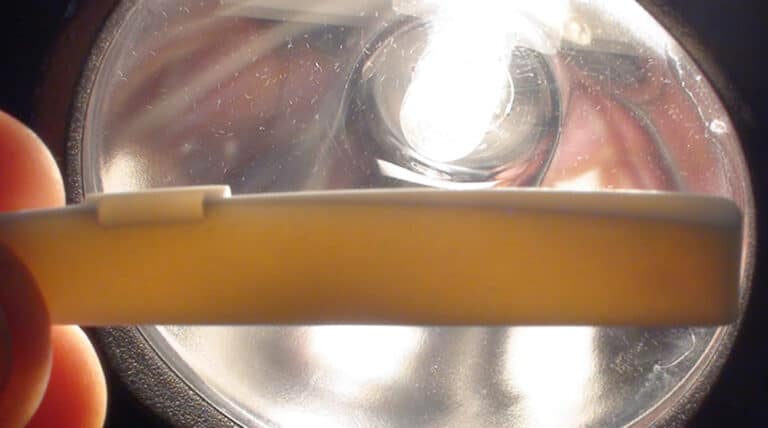
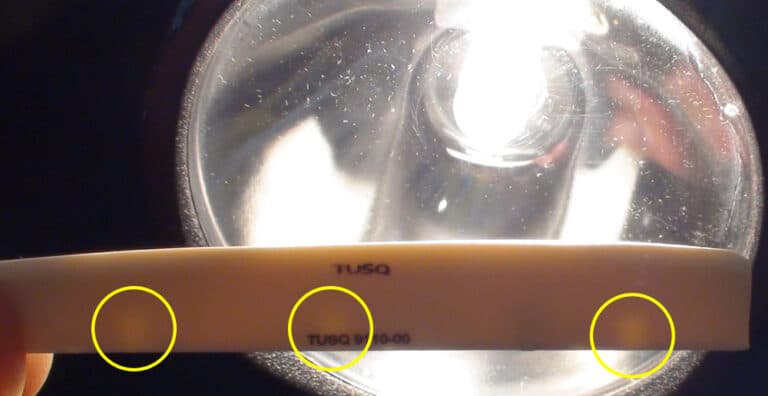
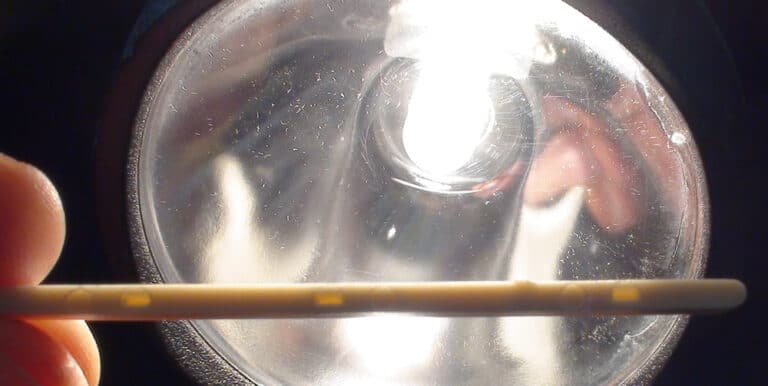
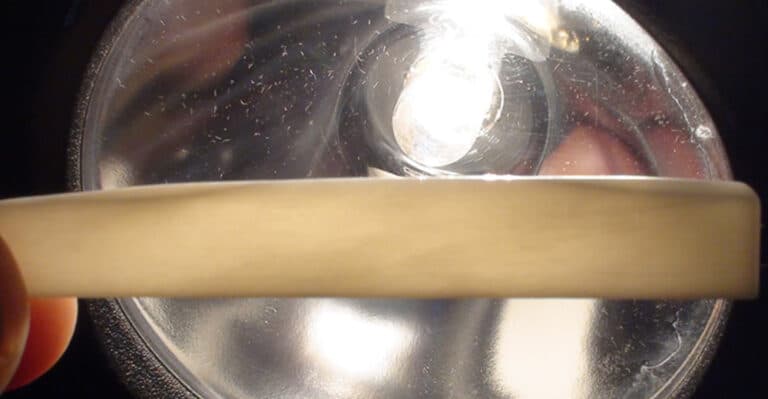
Smell Test
Try sanding off a small amount of material. Does it smell like the last time you were at the dentist and got a cavity filled? If so, you’ve likely got a bone saddle. Plastic will have little to no detectable smell.
Melt Test
If you don’t mind ruining your nut or saddle, a surefire way to distinguish plastic versus bone is to try melting the material. Take a hot pin or soldering iron and place it up against your part. If inexpensive plastic, the pin will begin to melt the material. Converseley, a bone saddle will burn but not melt.
Contact the Guitar Manufacturer
If you are the first owner of the guitar, and know that the nut or saddle hasn’t been replaced, you can do a Google search for the guitar manufacturer and look up your model’s specs, or contact the manufacturer with your model and serial number and ask what material was used at the factory.
Next Up: What Is the Best Acoustic Guitar Saddle Material?
Now that you have determined what material your saddle is, you may be thinking of replacing it. What material is best? Learn more about Micarta, Tusq, NuBone, and bone saddles by visiting our article on What Is the Best Acoustic Guitar Saddle Material?
